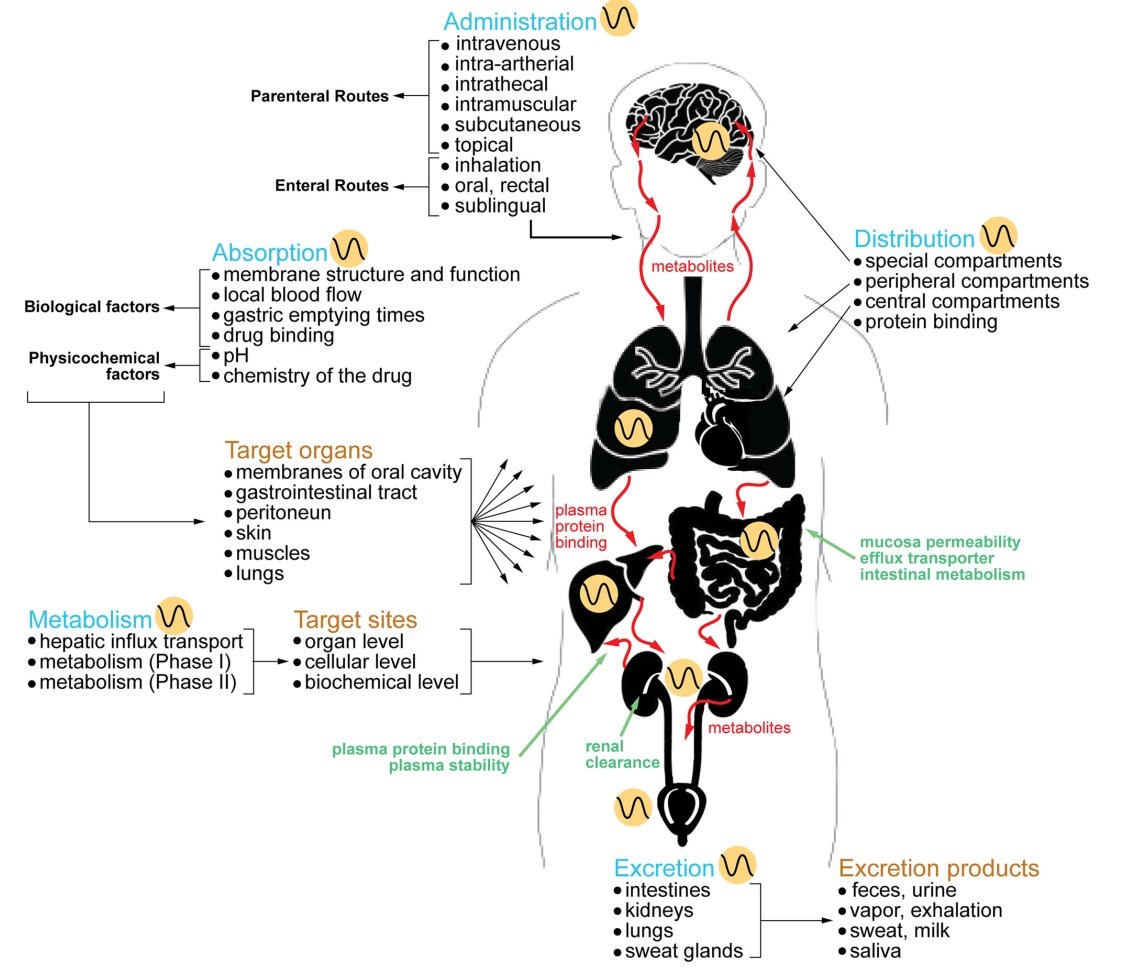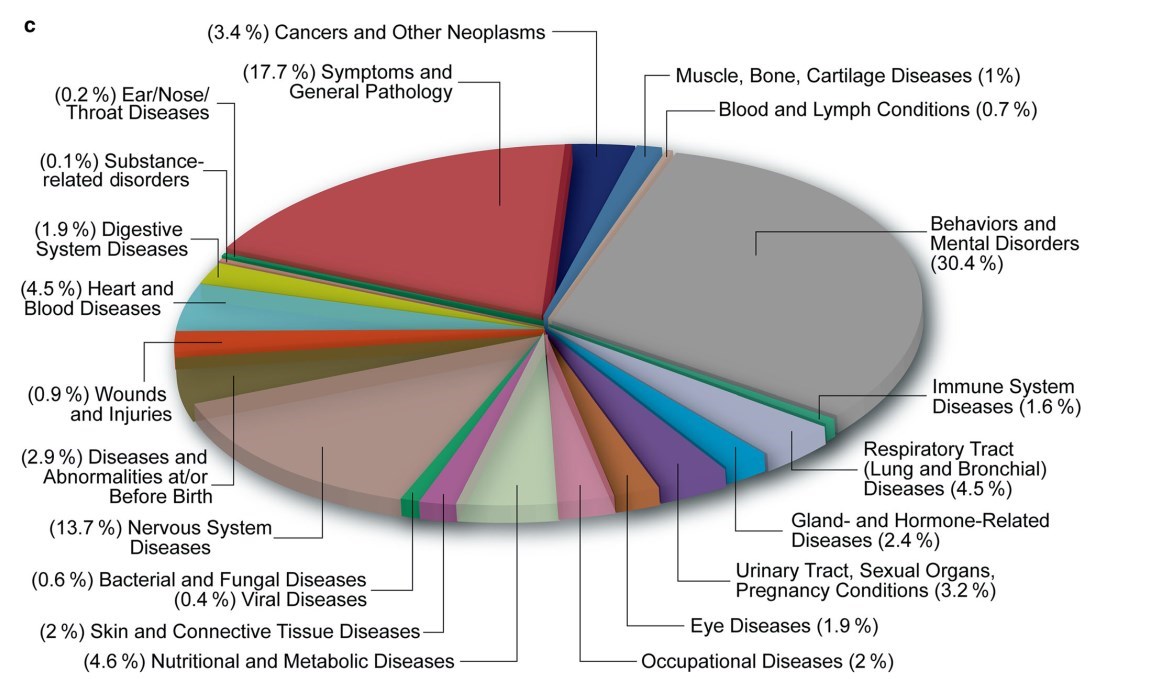Which supplements to take in morning and evening (Chronotherapy)
Even Vitamins Know Day and Night
Chronobiology.com date unknown
No reasons/data provided
{SPLIT(fixedsize="y" colsize="200px|300px|")}
Vitamins in the Morning
Vitamin A
Vitamin C
Vitamin D
- note evening is more bioavailable
Vitamin E
Vitamin B6
Vitamin K
Choline
Vitamins in the Evening
Vitamin B1
Vitamin B2
Vitamin B3
Vitamin B5
Vitamin B12
Niacin
Pantothenic acid
Biotin
Folic acid
{SPLIT}
{SPLIT(fixedsize="y" colsize="200px|300px|")}
Phytosubstances in the Morning
Resveratrol
Acai berry
Goji berry
Lycopene
Green tea extract
Mangosteen
Noni
Banaba extract
Gymnema sylvestre
Bitter melon
Pomegranate
Catechins
Bioflavonoids
Vinpocetine
Dong quai
Muria puama
Damiana
Taurine
Guarana
Lutein
Zeaxanthin
Phytosubstances in the Evening
Resveratrol
Quercetin
Isoflavones
Ginger
Panax ginseng
OPC
Ginko Biloba
Lutein
Citrus Aurantium
Capsicum
L-cysteine
Plantago major
Nattokinase
Aloe vera
{SPLIT}
{SPLIT(fixedsize="y" colsize="200px|300px|")}
Minerals, Chemical Elements, Enzymes, Peptides, Phytohormones, Alcohols in the Morning
Q10
Calcium (major portion)
Manganese
Glucosamine
Chondroitin
MSM
Hyaluronic acid
Selenium
MCHC
NADH
L-Glutathione
Iodine
Inositol
L-Carnitine
L-Arginine
Alpha lipoic acid
Magnesium (small portion)
Minerals, Chemical Elements, Enzymes, Peptides, Phytohormones, Alcohols in the Morning? (Evening)
Omega3
Potassium
Zinc
Glucosamine
Chondroitin
MSM
Iron
MCHC
Copper
Phosphatidylserine
L-Carnitine
Royal Jelly
Magnesium (major portion)
Calcium (small portion)
{SPLIT}
Chronobiology – How Circadian Rhythms Can Control Your Health & Weight _ Dr. Greger
Partial Transcript
The 2017 Nobel Prize in Medicine was awarded for elucidating the molecular mechanisms of our internal circadian clock. For billions of years, life on Earth evolved to a 24-hour cycle of light and dark, and so, it’s no surprise our bodies are finely tuned to that pattern. But put people in total darkness without any external time cues, and our body still continues to cycle in about a 24-hour “circadian” rhythm. In fact, you can even take tissue biopsies from people and show the cells continue to cycle outside the body in a petri dish. Nearly every tissue and organ in our body has its own internal clock.
An intricate system of intrinsic clocks drives not only some of our behavioral patterns, such as eating, fasting, sleeping, and wakefulness, but our internal physiology—our body temperature, blood pressure, hormone production, digestion, and immune activity. Most of the genes in our body exhibit daily fluctuations in expression, making the circadian rhythm the largest known regulatory system in our body. This cycling is thought to allow for a level of predictability and functional division of labor so each of our body processes can run at the best time. At night while we’re sleeping, a whole array of internal housekeeping activities can be switched on, for example, and as dawn approaches, our body can shift back into activity mode.
Anyone who’s ever had jet lag knows what throwing our cycle even just a few hours off can do, but now we know our circadian rhythms can literally be the difference between life and death. A study of more than 14,000 self-poisonings found that those who tried committing suicide in the morning were more than twice as likely to die than those who ingested the same dose in the evening. In the same vein, properly timed chemotherapy can not only end up being five times less toxic, but also twice as effective against cancer . The same drugs, at the same dose, but different effects depending on the time that they’re given. Our body absorbs, distributes, metabolizes, and eliminates what we ingest differently depending on when it is during the 24-hour cycle.
We’re just beginning to figure out the optimal timing for different medications. Randomize people suffering from hypertension into taking their blood pressure pills at bedtime instead of in the morning, and not only does the bedtime group achieve better blood pressure control and suffer fewer heart attacks and strokes, but cuts their risk of death in half (yet most physicians and pharmacists tell patients to take them in the morning, potentially doubling their risk of death). If chronotherapy—the optimal timing of drugs—can have such an impact, maybe it should come as no surprise that chronoprevention—the scheduling of lifestyle interventions like mealtimes—can also make a difference.
In the official Academy of Nutrition and Dietetics position paper on effective treatments for obesity, importance is placed not only on the quantity, but timing of calorie intake, suggesting that consuming more calories “earlier in the day, rather than later in the day can assist with weight management .” Some have gone further and even characterized obesity as a “chronobiological” disease. What evidence do we have to back up these kinds of claims?
Well, the timing of calorie intake may have shifted slightly over the last few decades towards a greater proportion of food later in the day, which raised the question about a possible role in the rise of obesity. Middle-aged men and women who eat a greater share of daily calories in the morning do seem to gain less weight over time, and a study entitled “Timing of food intake predicts weight loss effectiveness” found that dieters eating their main meal earlier in the day seemed to steadily lose more weight than those eating their main meal later.
The obvious explanation for these findings would just be that those who eat later also tend to eat more. And there does seem to be a relationship between when people eat most of their calorie intake and how many calories they end up eating over the entire day, with those eating a greater proportion in the morning eating less overall. Maybe later eaters are overeating junk on the couch watching primetime TV? A tendency has been found for night owls to eat more fast food, soda, and fewer fruits and vegetables. In the field of social psychology, there’s a controversial concept called “ego depletion,” where self-control is viewed as a limited resource like a muscle that can become fatigued from overuse. As the day wears on, the ability to resist unhealthy food choices may decline, leaving one vulnerable to temptation. So, is it just a matter of later eating leading to greater eating?
Remember this study where earlier eaters steadily lost more weight? To their surprise, the early eaters were eating as much as the late eaters despite the difference in weight loss magnitude. The early eaters ended up about five pounds lighter than the late eaters by the end of the 20-week study, even though they were apparently eating the same amount of food. There didn’t seem to be any difference in physical activity between the two groups either. Could it be that just the timing itself of calorie intake matters? Scientists decided to put it to the test, which we’ll cover next.
References
Sehgal A. Physiology Flies with Time. Cell. 2017;171(6):1232-1235.
Nelson RJ, Chbeir S. Dark matters: effects of light at night on metabolism. Proc Nutr Soc. 2018;77(3):223-229.
Froy O, Miskin R. Effect of feeding regimens on circadian rhythms: implications for aging and longevity. Aging (Albany NY). 2010;2(1):7–27.
Ruddick-collins LC, Johnston JD, Morgan PJ, Johnstone AM. The Big Breakfast Study: Chrono-nutrition influence on energy expenditure and bodyweight. Nutr Bull. 2018;43(2):174-183.
Challet E. Circadian clocks, food intake, and metabolism. Prog Mol Biol Transl Sci. 2013;119:105-35.
Green CB, Takahashi JS, Bass J. The meter of metabolism. Cell. 2008;134(5):728-42.
Van Someren EJ, Riemersma-Van Der Lek RF. Live to the rhythm, slave to the rhythm. Sleep Med Rev. 2007;11(6):465-84.
Panda S. Circadian physiology of metabolism. Science. 2016;354(6315):1008-1015.
Oda H. Chrononutrition. J Nutr Sci Vitaminol. 2015;61 Suppl:S92-4.
Waterhouse J, Reilly T, Atkinson G, Edwards B. Jet lag: trends and coping strategies. Lancet. 2007;369(9567):1117-29.
Carroll R, Metcalfe C, Gunnell D, Mohamed F, Eddleston M. Diurnal variation in probability of death following self-poisoning in Sri Lanka--evidence for chronotoxicity in humans. Int J Epidemiol. 2012;41(6):1821-8.
Dallmann R, Okyar A, Lévi F. Dosing-Time Makes the Poison: Circadian Regulation and Pharmacotherapy. Trends Mol Med. 2016;22(5):430-445.
Kirley K, Sharma U, Rowland K. PURLs: BP meds: this simple change improves outcomes. J Fam Pract. 2012;61(3):153–155.
Hermida RC, Ayala DE, Mojón A, Fernández JR. Influence of circadian time of hypertension treatment on cardiovascular risk: results of the MAPEC study. Chronobiol Int. 2010;27(8):1629-51.
Beccuti G, Monagheddu C, Evangelista A, et al. Timing of food intake: Sounding the alarm about metabolic impairments? A systematic review. Pharmacol Res. 2017;125(Pt B):132-141.
Raynor HA, Champagne CM. Position of the Academy of Nutrition and Dietetics: Interventions for the Treatment of Overweight and Obesity in Adults. J Acad Nutr Diet. 2016;116(1):129-47.
Garaulet M, Ordovás JM, Madrid JA. The chronobiology, etiology and pathophysiology of obesity. Int J Obes (Lond). 2010;34(12):1667-83.
Almoosawi S, Winter J, Prynne CJ, Hardy R, Stephen AM. Daily profiles of energy and nutrient intakes: are eating profiles changing over time?. Eur J Clin Nutr. 2012;66(6):678-86.
Purslow LR, Sandhu MS, Forouhi N, et al. Energy intake at breakfast and weight change: prospective study of 6,764 middle-aged men and women. Am J Epidemiol. 2008;167(2):188-92.
Garaulet M, Gómez-abellán P, Alburquerque-béjar JJ, Lee YC, Ordovás JM, Scheer FA. Timing of food intake predicts weight loss effectiveness. Int J Obes (Lond). 2013;37(4):604-11.
De castro JM. The time of day of food intake influences overall intake in humans. J Nutr. 2004;134(1):104-11.
Thomson M, Spence JC, Raine K, Laing L. The association of television viewing with snacking behavior and body weight of young adults. Am J Health Promot. 2008;22(5):329-35.
Baron KG, Reid KJ, Kern AS, Zee PC. Role of sleep timing in caloric intake and BMI. Obesity (Silver Spring). 2011;19(7):1374-81.
Haynes A, Kemps E, Moffitt R. Is cake more appealing in the afternoon? Time of day is associated withcontrol over automatic positive responses to unhealthy food. Food Qual Prefer. 2016;54:67-74.
Thomas DE, Elliott EJ, Baur L. Low glycaemic index or low glycaemic load diets for overweight and obesity. Cochrane Database Syst Rev. 2007;(3):CD005105.
Jakubowicz D, Barnea M, Wainstein J, Froy O. High caloric intake at breakfast vs. dinner differentially influences weight loss of overweight and obese women. Obesity (Silver Spring). 2013;21(12):2504-12.
Chronotherapy: Intuitive, Sound, Founded…But Not Broadly Applied - Dec 2016
📄 Download the PDF from VitaminDWiki

"Pie chart divided into sectors proportionate to the distribution of clinical trials involving a form of chronotherapy treatment categorized by disease condition"
Thus entire pie = all trials considering chemotherapy

Conclusions
As in many aspects of life, there is a great deal of truth in the proclamation that ‘timing is everything’ thus, it should not come as a surprise that this saying also applies to the administration of medical treatments. Largely disregarded in the standard medical practice because it lacked a strong mechanistic foundation, circadian biology has waited decades to emerge as a complementary and inclusive scientific discipline capable of bridging molecular genetics, biochemistry, physiology, pharmacology, pathology, and clinical research. Given the possibilities that this field of research opens to clinicians today, it could impact the quality of life of patients and the effectiveness of disease therapies. The clinical translation of chronotherapy to diseases such as
hypertension,
arthritis,
asthma, and
peptic ulcers
resulted in such significant benefits for patients that it is now standard practice [73]. Therefore, health professionals and regulatory agencies have a sense of urgency regarding the implementation of chronotherapy when designing clinical studies and evaluating trial results.
